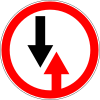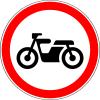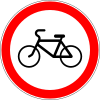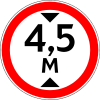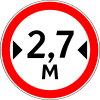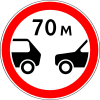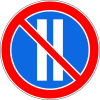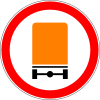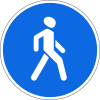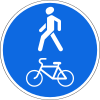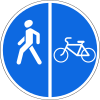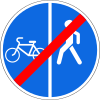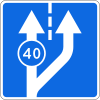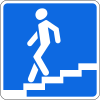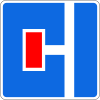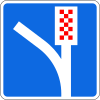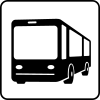
European traffic signs present relevant differences between countries despite an apparent uniformity and standardisation. Most European countries refer to the 1968 Vienna Convention on Road Signs and Signals. The convention has been adopted by the following countries : Albania, Armenia, Austria, Belarus, Belgium, Bosnia and Herzegovina, Bulgaria, Croatia, Cyprus, the Czech Republic, Denmark, Estonia, Finland, France, Georgia, Germany, Greece, Hungary, Italy, Latvia, Liechtenstein, Lithuania, Luxembourg, Moldova, Montenegro, Netherlands, North Macedonia, Norway, Poland, Portugal, Romania, Russia, San Marino, Serbia, Slovakia, Slovenia, Spain, Sweden, Switzerland, Turkey, Ukraine and the United Kingdom. The convention has not been adopted by Ireland, Iceland or Malta.
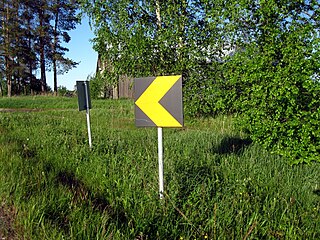
Road signs in Finland are formerly regulated in Tieliikenneasetus (5.3.1982/182), but is currently regulated in Siirtymäsäännökset (8.5.2020/360).
Road signs in Ukraine are governed by a combination of standards set out by the Vienna Convention on Road Signs and Signals, the European Union (EU), and Ukraine Transport and Roads Agency. Ukrainian signs are similar to the signs of other post-Soviet states and are set out in 7 separate categories based on meaning: warning, priority, prohibitory, mandatory, information, service, and additional plates.

Road signs in Estonia ensure that transport vehicles move safely and orderly, as well as to inform the participants of traffic built-in graphic icons. These icons are governed by the Vienna Convention on Road Traffic and Vienna Convention on Road Signs and Signals. The system is covered in Liiklusmärkide ja teemärgiste tähendused ning nõuded fooridele and the standards document EVS 613:2001 Traffic signs.
Road signs in Azerbaijan are similar to the road sign system of post-Soviet states that ensure that transport vehicles move safely and orderly, as well as to inform the participants of traffic built-in graphic icons. They generally conform to the Vienna Convention on Road Traffic and Vienna Convention on Road Signs and Signals.
Road signs in Mongolia are similar to the Soviet, British, and other European road sign systems. They ensure that transport vehicles move safely and in an orderly manner, and inform the participants of traffic built-in graphic icons. These icons are regulated in MNS 4597:2014 and comply to the Vienna Convention on Road Traffic and Vienna Convention on Road Signs and Signals. Despite the fact that Mongolia was never part of the Soviet Union, the MNS 4597:2014 standard for road signs has many similarities with its post-Soviet counterparts based on ГОСТ 10807-78 and ГОСТ Р 52290-2004.
Road signs in Armenia are similar to the signs of other post-Soviet states and most European road sign systems. Armenia is a signatory of the Vienna Convention on Road Traffic and the Vienna Convention on Road Signs and Signals. The Ministry of Transport regulates these icons, while the police enforces them. Road signs ensure transport vehicles move safely and orderly, as well as, to inform both pedestrians and motorists of traffic rules.
Road signs in Georgia are similar to the road sign system of other post-Soviet states that ensure that transport vehicles move safely and orderly, as well as to inform the participants of traffic built-in graphic icons. However, some road signs look a bit different from Soviet ones and closer to the European ones. These icons are governed by the Vienna Convention on Road Traffic and Vienna Convention on Road Signs and Signals.
Road signs in Kyrgyzstan are similar to the road sign system of other post-Soviet states that ensure that transport vehicles move safely and orderly, as well as to inform the participants of traffic built-in graphic icons. These icons are governed by the Vienna Convention on Road Traffic and Vienna Convention on Road Signs and Signals.
Road signs in Uzbekistan are similar to the road sign system of other post-Soviet states that ensure that transport vehicles move safely and orderly, as well as to inform the participants of traffic built-in graphic icons. They are regulated in O'zDst 3283-2017. Uzbekistan is a signatory to the Vienna Convention on Road Traffic and Vienna Convention on Road Signs and Signals.

Road signs in Lithuania ensure that transport vehicles move safely and orderly, as well as to inform the participants of traffic built-in graphic icons. These icons are governed by the Vienna Convention on Road Traffic and Vienna Convention on Road Signs and Signals.

The road signs, used on the Serbian road network, are regulated by the "Regulation of Traffic Signs", which was last time modified in 2017.

Road signs in Russia are governed by the traffic rules approved by the Decree of the Government of the Russian Federation No. 1090 of 23 October 1993 “On the Rules of the Road”, Appendix 1 “Road Signs”. They are regulated by the ГОСТ Р 52289-2019 and ГОСТ Р 52290-2004 standards determining the rules for the use and production of road signs. The vast majority of road signs used in Russia were in the preceding Soviet standard ГОСТ 10807-78, which was introduced in the Soviet Union on January 1, 1980 before its dissolution in 1991 and is no longer valid in Russia since January 1, 2006 after it was replaced by the modern standard ГОСТ Р 52290-2004 for road signs. Road signs generally conform to the Vienna Convention on Road Signs and Signals. Similar road signs are also used in other post-Soviet countries.

Road signs in Portugal are governed by the "Regulamento de Sinalização do Trânsito" of the Republic of Portugal.

Road signs in Latvia ensure that transport vehicles move safely and orderly, as well as to inform the participants of traffic built-in graphic icons. These icons are governed by the Vienna Convention on Road Traffic and Vienna Convention on Road Signs and Signals. The system is covered in Ceļu satiksmes noteikumi and the standards documents LVS 77–1:2016 "Ceļa zīmes. 1. daļa: Ceļa zīmes", LVS 77-2:2016 "Ceļa zīmes. 2. daļa: Uzstādīšanas noteikumi" and LVS 77-3:2016 "Ceļa zīmes. 3. daļa: Tehniskās prasības".
The road signs in the post-Soviet countries Armenia, Azerbaijan, Belarus, Estonia, Georgia, Kazakhstan, Kyrgyzstan, Latvia, Lithuania, Moldova, Russia, Tajikistan, Turkmenistan, Ukraine and Uzbekistan are largely similar to the Soviet road sign system, as these countries were part of the Soviet Union. However, in some countries of the former USSR, some road signs may look different from the Soviet ones. The Soviet Union was a signatory to the 1968 Vienna Convention on Road Signs and Signals. After the dissolution of the Soviet Union in 1991, each of the 15 post-Soviet states adopted its own road sign standard. Many of them use road sign systems that inherited the road sign system used in the Soviet Union before 1991, but with some modifications, except for Estonia and Latvia that use completely different road sign systems. Estonia and Latvia have their own road sign systems, which are very different from the Soviet one. Road signs in Armenia, Azerbaijan, Belarus, Estonia, Georgia, Kazakhstan, Kyrgyzstan, Latvia, Lithuania, Moldova, Russia, Tajikistan, Turkmenistan, Ukraine and Uzbekistan comply with the Vienna Convention on Road Signs and Signals as well as most European countries. Road signs of the post-Soviet countries may have road signs that are not found in other post-Soviet countries.

Road signs in Tajikistan are similar to the signs of other post-Soviet states and most European road sign systems. Like all post-Soviet states, Tajikistan is a signatory to the Vienna Convention on Road Traffic and the Vienna Convention on Road Signs and Signals. Order of the Government of the Republic of Tajikistan of June 29, 2017 No. 323 "About Traffic regulations" regulates road signs and markings. Road signs ensure transport vehicles move safely and orderly, as well as, to inform both pedestrians and motorists of traffic rules. Images of road signs are mostly based on the Soviet ГОСТ 10807-78, Belarusian СТБ 1140-2013 and Russian ГОСТ Р 52290-2004 standards.
Road signs in Turkmenistan are similar to the road sign system of other post-Soviet states that ensure that transport vehicles move safely and orderly, as well as to inform the participants of traffic built-in graphic icons. They generally conform to the Vienna Convention on Road Signs and Signals. Turkmenistan is a signatory to the Vienna Convention on Road Signs and Signals since June 14, 1993.

Road signs in Belarus are similar to the signs used in other post-Soviet states and most European road sign systems. Like all post-Soviet states, Belarus is a signatory to the Vienna Convention on Road Traffic and the Vienna Convention on Road Signs and Signals. Road signs ensure transport vehicles move safely and orderly, as well as, to inform both pedestrians and motorists of traffic rules. Road signs are regulated by the СТБ 1140-2013 standard.

Road signs in the Soviet Union were regulated in the ГОСТ 10807-78 standard which was introduced on January 1, 1980. This standard also specified the typeface used on road signs. After the dissolution of the Soviet Union in 1991, this standard continued to apply in all countries that were formerly Soviet republics until some of them adopted their own standards for road signs. The shapes and colors of road signs in the Soviet Union, and now in all post-Soviet countries, fully comply with the 1968 Vienna Convention on Road Signs and Signals, to which the Soviet Union was originally a signatory. On November 8, 1968, the Soviet Union signed the Vienna Convention on Road Signs and Signals, and on June 7, 1974 ratified it with some declarations and reservations upon ratification.

























































